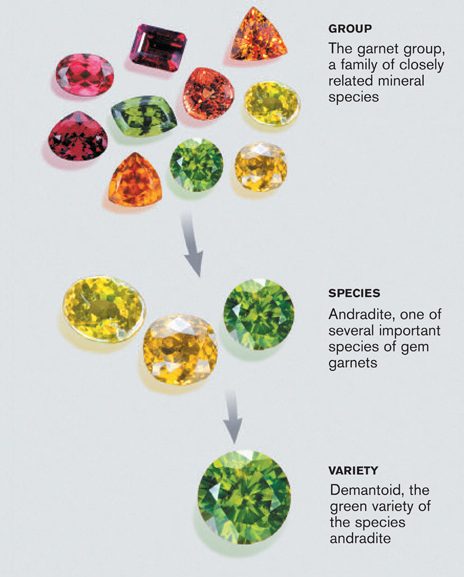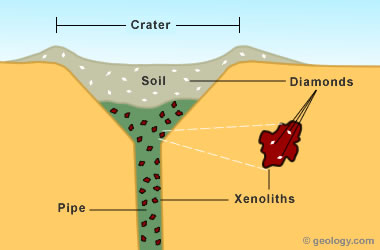Garnet | January
Garnets encompass a family of closely associated minerals, giving rise to gemstones spanning a wide spectrum of colors. Understanding the specific color range within each mineral species of this group can be invaluable.
Garnet: The Jewel of January
From the vast reaches of time, as stars painted stories across the heavens, emerged an ancient tradition bridging the celestial and terrestrial: birthstones. Conceived by visionaries like Flavius Josephus, this lore birthed an intimate connection between zodiac constellations and earthly gemstones. And from this stellar dance, under the frosty embrace of January, emerges the Garnet – a gem that doesn’t just sparkle, but resonates with millennia of history and the heartbeat of the cosmos.
Imagine, through the lens of both antiquity and modern science, a gemstone crystallized deep within Earth’s fiery mantle. Born from intense geothermal processes, Garnet is Earth’s testament to resilience, a tangible echo of the strength inherent in January-born souls. Named after the Latin ‘granatum’, its vibrant colors recall the deep-red seeds of a pomegranate – a symbol of life’s unwavering pulse.
Throughout history, Garnet has been the cherished jewel of civilizations. Pharaohs of ancient Egypt revered its vibrant glow, and Roman nobles entrusted their edicts to its unyielding signature. There are even whispers of it lighting the path for Noah’s Ark during the world’s most formidable tempest.
With a spectrum ranging from fiery reds to enigmatic purples, Garnet’s hues are as diverse as the personalities of those born in January. Modern geology tells us that its variety of colors is due to variations in its mineral composition, yet each hue, scientifically and symbolically, represents a unique facet of its beholder.
Beyond its aesthetic allure, Garnet’s significance extends into the realms of modern science. Geologists treasure it as a window into our planet’s history. Its robustness has carved out niches in industries, from abrasives to advanced electronics. Yet, at its core, it remains a gem of legends, dreams, and cosmic tales.
So, for souls touched by January’s frost, why Garnet? Because it’s more than a gem. It’s a celestial connection, an emblem of legacy, and a beacon of both ancient wisdom and scientific curiosity.
In the embrace of Garnet, one finds a confluence of past legends, present discoveries, and the timeless dance of the cosmos.

Garnet Group, Species And Variety
Chemical Composition: The garnet group belongs to the silicate mineral class, characterized by a crystal structure known as the isometric system. The general chemical formula for garnets is A3B2(SiO4)3, where A and B represent different elements, primarily metal cations. The specific combination of elements in a garnet’s composition determines its color and properties.
Color Varieties: One of the remarkable features of the garnet group is the diversity of colors it encompasses. Garnets can be found in various shades of red, green, yellow, orange, brown, pink, and even colorless. Each color is associated with a different type of garnet and is influenced by the specific metals present in their crystal structure.


Common Garnet Varieties:
- Almandine: Deep red to purplish-red, often referred to as “carbuncle” in historical contexts.
- Pyrope: Fiery red to crimson, often seen in antique jewelry.
- Rhodolite: A purplish-red to pinkish-red variety, known for its vibrant hue.
- Spessartine: Bright orange to orangish-red, sometimes called “mandarin garnet.”
- Grossular: A wide range of colors, including green, yellow, brown, and even colorless. Varieties like tsavorite and hessonite are well-known.
- Andradite: Green to brownish-green, with rare varieties such as demantoid (vivid green) and topazolite (yellowish-green).
- Uvarovite: Emerald green and the rarest garnet variety.
- Mali Garnet: Yellowish-green to greenish-yellow.
Formation and Occurrence: Garnets are typically formed in metamorphic rocks and some igneous rocks. They can be found in various geological settings, from mountain ranges to alluvial deposits. While most garnets originate in Earth’s crust, some are brought to the surface from the mantle during deep-source volcanic eruptions within xenoliths.
Scientific Fact: "Indicator Minerals for Diamond Prospecting"

While the majority of garnets found on the Earth’s surface originate in the crust, a distinctive type of garnet emerges from deep-source volcanic eruptions, often carried within xenoliths. These xenoliths are fragments of mantle rock transported to the surface via volcanic pipes. Notably, these deep-source garnets differ markedly from their shallow crustal counterparts. They tend to be larger and more abundant in xenoliths compared to diamonds. This unique characteristic makes these deep-source garnets invaluable as “indicator minerals” for geologists searching for diamond deposits.
As xenoliths undergo weathering processes, they release substantial numbers of these unusual garnets. These liberated garnets are transported downslope through soils and waterways. Geologists rely on identifying these distinct garnets to trace their path back to the source deposit. Remarkably, some diamond-rich pipes in Canada were discovered by tracking the movement of these garnets, often facilitated by glacial ice.
This scientific fact underscores the essential role that garnets play in the exploration and discovery of diamond deposits, offering geologists valuable clues to the Earth’s hidden treasures.
